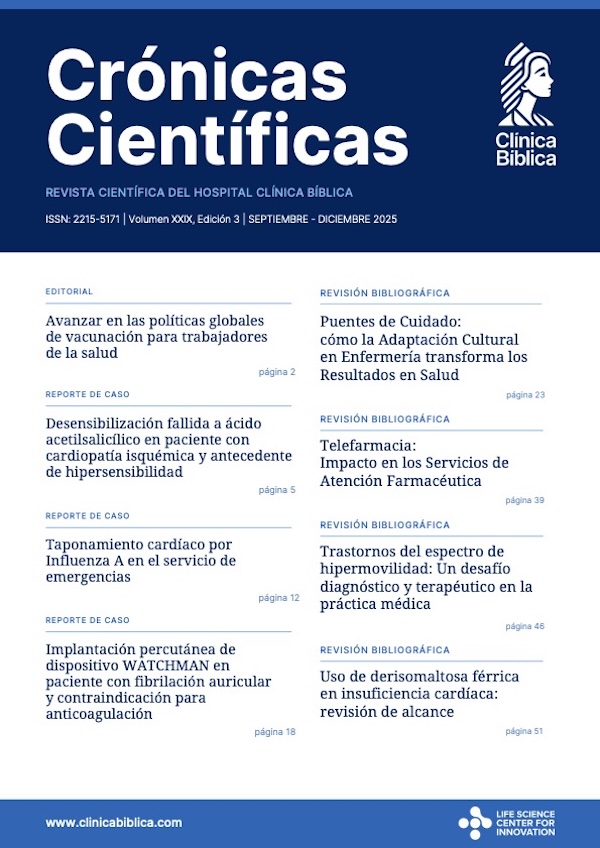- Visto: 1134
Revisión Bibliográfica
Terapia genética en la enfermedad de células falciformes
Genetic therapy in sickle cell disease
Edición XII Mayo - Agosto 2019
DOI: https://doi.org/10.55139/ULEY2126
APA (7ª edición)
Mackenzie-Visbal, F., Vílchez-León, M. (2019). Terapia genética en la enfermedad de células falciformes. Crónicas Científicas, 12(12), 3-47. https://doi.org/10.55139/ULEY2126.
Vancouver
Mackenzie-Visbal F, Vílchez-León M. Terapia genética en la enfermedad de células falciformes. Cron Cient. 7 de marzo 2019;12(12): 3-47.
Dr. Fidel Mackenzie Visbal
Médico General, San José, Costa Rica.
Investigador independiente.
Miembro del Colegio de Médicos y Cirujanos de Costa Rica.
Costa Rica.
Dra. Mariana Vílchez León
Médico General, San José, Costa Rica.
Investigadora independiente.
Miembro del Colegio de Médicos y Cirujanos de Costa Rica.
Costa Rica.
Resumen
La enfermedad de células falciformes (ECF) es la patología hematológica hereditaria más prevalente a nivel mundial, que afecta a alrededor de 330 000 nacimientos por año. Esta patología presenta complicaciones agudas, siendo las principales: crisis de dolor, anemia, priapismo, infecciones, síndrome torácico agudo, eventos cerebrovasculares y secuestro esplénico. De forma crónica se presentan complicaciones en órganos como cerebro, ojos, corazón, riñones, pulmones e hígado. Con el advenimiento de las nuevas tecnologías, se han podido crear vectores lentivirales para la transducción de material genético en células CD34+, a través de los cuales se pueden realizar modificaciones genéticas, tales como la adición de genes de β y γ-globina y procesos de edición del genoma que permiten la corrección del defecto genético o la inducción de la expresión de hemoglobina fetal (HbF). Gracias a este desarrollo tecnológico, la terapia génica se perfila como el tratamiento curativo de la ECF por excelencia en los próximos años, por todas sus ventajas en comparación con el único tratamiento definitivo disponible, el trasplante de células hematopoyéticas.
Palabras claves
Drepanocitosis, terapia génica, edición genética, β-globina, γ-globina.
Abstract
Sickle cell disease (SCD) is the most prevalent hereditary disease worldwide, affecting around 330,000 births per year. This pathology presents acute complications, the main ones being pain crises, anemia, priapism, infections, acute thoracic syndrome, cerebrovascular events and splenic sequestration. Chronically there are complications at the level of organs such as brain, eyes, heart, kidneys, lungs and liver. With the advent of new technologies, it has been possible to create lentiviral vectors for the transduction of genetic material in CD34+ cells, through which genetic modifications can be made, such as the addition of β and γ-globin genes, and Genome editing processes that allow the correction of the genetic defect or the induction of the expression of fetal hemoglobin (HbF). Thanks to this technological development, gene therapy is emerging as the curative treatment of ECF par excellence in the coming years, with all its advantages compared to the only definitive treatment available, the transplantation of hematopoietic cells.
Keywords
Sickle cell disease, gene therapy, genetic edition, β-globine, γ-globine.
Bibliografía
Azar, S.; Wong, T. E. (2017). Sickle Cell Disease. A Brief Update. Medical Clinics of North America, 101 (2017), 375-393. doi: 10.1016/j. mcna.2016.09.009
Brewin, J.; Howard, J. (2017). Sickle cell disease: an update on management. Paediatrics and Child Health, 27 (11), 506-510. doi: 10.1016/j. paed.2017.07.005
Demirci, S.; Uchida, N.; Tisdale, J. (2018). Gene therapy for sickle cell disease: An update. Cytotherapy, 20 (7), 899-910. doi: 10.1016/j. jcyt.2018.04.003
Esrick, E. B.,; Bauer, D. E. (2018). Genetic therapies for sickle cell disease. Seminars in Hematology, 55 (2018), 76–86. doi: 10.1053/j. seminhematol.2018.04.014
Ferrari, G.; Cavazzana, M.; Mavilio, F. (2017). Gene Therapy Approaches to Hemoglobinopathies. Hematology/Oncology Clinics Of North America, 31(5), 835-852. doi: 10.1016/j.hoc.2017.06.010
Herrick, J. B. (1910). Peculiar elongated and sickle-shaped red blood corpuscles in a case of severe anemia. Yale Journal of Biology and Medicine, 74 (2001), 179–184.
Hoban, M.D.; Cost, G. J.; Mendel, M. C.; Romero, Z.; Kaufman, M. L.; Joglekar, A. V.; Kohn, D. B. (2015). Correction of the sickle cell disease mutation in human hematopoietic stem/progenitor cells. Blood, 125 (17), 2597 – 2604. doi: 10.1182/blood-2014-12-615948
Hoban, M.; Orkin, S.; Bauer, D. (2016). Genetic treatment of a molecular disorder: gene therapy approaches to sickle cell disease. Blood, 127 (7), 839-848. doi: 10.1182/blood-2015-09-618587
Jayavaradhan, R.; Malik., P. (2018). Genetic Therapies for Sickle Cell Disease. Pediatric Clinics of North America, 65 (2018), 465-480. doi: 10.1016/j.pcl.2018.01.008
Kapoor, S.; Little, J.; Pecker, L. (2018). Advances in the Treatment of Sickle Cell Disease. Mayo Clinic Proceedings, 93(12), 1810-1824. doi: 10.1016/j.mayocp.2018.08.001
Pauling, L.; Itano, H. A.; Singer, S. J.; Wells, I.C. (1949). Sickle cell anemia a molecular disease. Science, 110, 543–548. doi: 10.1126/ science.110.2865.543
Piel, F. B.; Steinberg, M. H.; Rees, D. C. (2017) Sickle Cell Disease. New England Journal of Medicine, 376 (16), 1561-1573. doi: 10.1056/ NEJMra1510865
Poletti, V.; Urbinati, F.; Charrier, S.; Corre, G.; Hollis, R.; Campo-Fernandez, B; Mavilio, F. (2018). Pre-clinical Development of a Lentiviral Vector Expressing the Anti-sickling βAS3 Globin for Gene Therapy for Sickle Cell Disease. Molecular Therapy - Methods & Clinical Development, 11, 167-179. doi: 10.1016/j. omtm.2018.10.014
Ribeil, J.; Hacein-Bey-Abina, S.; Payen, E.; Magnani, A.; Semeraro, M.; Magrin, E.; Cavazzana, M. (2017). Gene Therapy in a Patient with Sickle Cell Disease. New England Journal of Medicine, 376 (9), 848-855. doi: 10.1056/NEJMoa1609677
Romero, Z.; DeWitt, M.; Walters, M. (2018). Promise of gene therapy to treat sickle cell disease. Expert Opinion on Biological Therapy, 18(11), 1123-1136. doi: 10.1080/14712598.2018.1536119
Taliaferro, W. H.; Huck, J. G. (1923). The inheritance of sickle cell anemia in man. Genetics, 8 (1923): 594-598.
Tzounakas, V, L.; Valsami, S. I.; Kriebardis, A. G.; Papassideri, I. S.; Seghatchian, J.; Antonelou, M. H. (2018). Red cell transfusion in paediatric patients with thalassaemia and sickle cell disease: Current status, challenges and perspectives. Transfusion and Apheresis Science, 57 (3), 347-357.doi: 10.1016/j. transci.2018.05.018
Ware, R. E.; De Montalembert, M.; Tshilolo, L.; Abboud, M. R. (2017). Sickle cell disease. The Lancet, 390 (10091), 311-323. doi: 10.1016/ S0140-6736(17)30193-9
Xu, P.; Tong, Y.; Liu, X.; Wang, T.; Cheng, L.; Wang, B.; Liu, D. (2015). Both TALENs and CRISPR/Cas9 directly target the HBB IVS2-654 (C > T) mutation in beta-thalassemia-derived iPSCs. Scientific Reports, 5 (12065), 1-12. doi: 10.1038/srep12065
Ye, L.; Wang, J.; Tan, Y.; Beyer, A. I.; Xie, F.; Muench, M. O.; Kan, Y. W. (2016). Genome editing using CRISPR-Cas9 to create the HPFH genotype in HSPCs: An approach for treating sickle cell disease and β-thalassemia. Proceedings of the National Academy of Sciences of the United States of America, 113 (38), 10661-10665. doi: 10.1073/pnas.1612075113
Zaidi, A. U.; Heeney, M.M. (2018). A Scientific Renaissance: Novel Drugs in Sickle Cell Disease. Pediatric Clinics of North America, 65 (3), 445- 464. doi: 10.1016/j.pcl.2018.01.006.
APA (7ª edición)
Mackenzie-Visbal, F., Vílchez-León, M. (2019). Terapia genética en la enfermedad de células falciformes. Crónicas Científicas, 12(12), 3-47. https://doi.org/10.55139/ULEY2126.
Vancouver
Mackenzie-Visbal F, Vílchez-León M. Terapia genética en la enfermedad de células falciformes. Cron Cient. 7 de marzo 2019;12(12): 3-47.
Esta obra está bajo una licencia internacional Creative Commons: Atribución-NoComercial-CompartirIgual 4.0 Internacional (CC BY-NC-SA 4.0)

Realizar búsqueda
Última Edición
Ediciones Anteriores






